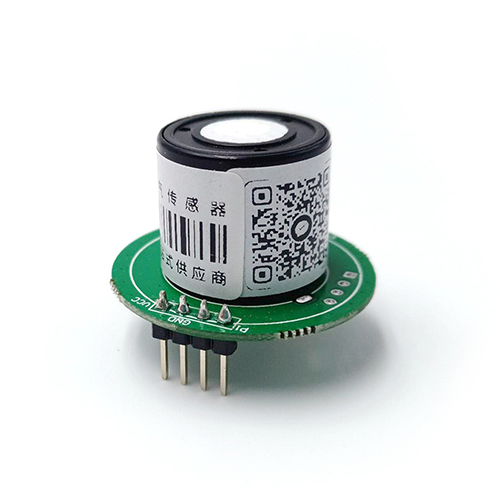Hydrogen sensor working principle
Hydrogen is an invisible, odorless, flammable and explosive gas. In our production and life, there are some places where hydrogen release and leakage are prone to occur. By using hydrogen monitoring equipment, the hydrogen concentration in the air can be monitored in real time.
A hydrogen sensor is a conversion device that can measure a usable electrical signal by converting the hydrogen concentration. At normal temperature, it has high sensitivity and selectivity to hydrogen. In production and life, the hydrogen sensor plays an important role in preventing hydrogen concentration from exceeding the limit and providing early warning.
Hydrogen sensor working principle
Common Hydrogen sensor working principles include conductive type, thermoelectric type, catalytic combustion type and electrochemical type.
When the device adsorbs hydrogen, the hydrogen releases electrons as a donor and combines with the oxygen ions in the chemical adsorption layer, so the carrier concentration changes. Based on the functional relationship between the change value and the hydrogen volume fraction, the real-time concentration of hydrogen is calculated. This is how an electrical conductor hydrogen transmitter works.
When the sensitive element is exposed to an environment containing hydrogen, under the action of the catalytic metal, the hydrogen and oxygen react to generate water vapor and release heat. Therefore, the end where the catalytic metal is deposited has a high temperature, which is the hot end, and the end where the catalytic metal is not deposited has a low temperature. As the cold end, due to the thermoelectric power generation effect (Seebeck effect) of the thermoelectric material, the temperature difference between the hot end and the cold end is converted into a temperature difference potential and output in the form of an electrical signal, thereby realizing the detection of hydrogen. This is It is called a thermoelectric hydrogen transmitter.
The electrochemical hydrogen sensor utilizes the active chemical properties of hydrogen, which has reducing or oxidizing properties, and is a precision monitoring device. During the process of participating in chemical reactions, electrons are released or absorbed, and a large number of electrons form a current. The size of the current is proportional to the gas concentration. By measuring the size of the current, the real-time concentration of hydrogen can be measured.
What are the characteristics of electrochemical hydrogen sensors?
1.The use of electrochemical hydrogen sensors can quickly and sensitively collect the hydrogen concentration in the use environment, and the measurement accuracy is high, up to ±3% FS, and the repeatability can be up to within 2%.
2.The equipment adopts a unique compensation algorithm and multi-stage standard gas calibration, which has many characteristics such as strong anti-interference ability, high stability and long service life.
3.The concentration of hydrogen released in different environments is different, so the range of measuring hydrogen concentration is 0~1000ppm, 0~40000ppm, etc.
Hydrogen sensor applications
In the field of industrial control, such as in nuclear reactors, power generation industry and communication industry, in the process of mining naturally occurring minerals such as coal, minerals, crude oil, natural gas, etc., in the processing of fossil fuels or rocket fuel, and ammonia and methanol During the synthesis process, it is usually necessary to install hydrogen sensors for early warning monitoring of hydrogen leakage. The key to these applications is that the hydrogen concentration must be controlled below the set minimum flammable concentration value.
In various environments, hydrogen sensors, as an important part of gas monitoring, play the role of real-time monitoring, data transmission, and abnormal alarms.
As a new energy source, hydrogen has the advantages of high combustion efficiency and non-polluting products. In life, common hydrogen-powered electric vehicles take advantage of the non-polluting nature of hydrogen. However, hydrogen is flammable and explosive, colorless and odorless, and the human body cannot detect it when it leaks. In new energy vehicles, in order to ensure the safe use of related facilities, hydrogen sensors are often configured to monitor possible hydrogen leakage in hydrogen fuel cells in real time, serving as the core of abnormal alarm and linkage control.








